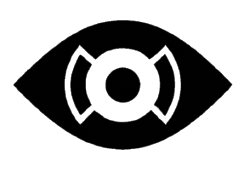AI powered computer vision spans from analyzing medical scans to facial recognition.
Computer vision, a field of artificial intelligence (AI) that enables computers to interpret and make decisions based on visual data, has made remarkable strides in recent years. From its early beginnings, where it was limited to basic image processing tasks, computer vision has evolved to play a crucial role in various industries, transforming the way we interact with technology.
Present Applications of Computer Vision
Today, computer vision is ubiquitous, embedded in everyday technologies that enhance our lives and streamline business operations. In the realm of consumer technology, facial recognition systems have become commonplace, unlocking our smartphones and enabling seamless security protocols. Social media platforms employ computer vision to tag friends in photos automatically, while content moderation algorithms identify and filter inappropriate content.
In the healthcare sector, computer vision has revolutionized diagnostic procedures. Advanced imaging systems powered by AI analyze medical scans with remarkable accuracy, assisting doctors in identifying diseases such as cancer at earlier stages than ever before. In autonomous vehicles, computer vision systems process real-time data from cameras and sensors to navigate complex environments, bringing us closer to a future of self-driving cars.
Retail and e-commerce also benefit from computer vision through applications like virtual try-ons and automated checkout systems. For instance, Amazon Go stores utilize computer vision to allow customers to shop without traditional checkout processes, enhancing the shopping experience and reducing operational costs.
The Future of Computer Vision
As we look to the future, the potential of computer vision seems boundless. One area poised for significant advancement is augmented reality (AR). By leveraging computer vision, AR can overlay digital information onto the physical world, offering immersive experiences in gaming, education, and retail. Imagine walking down the street and receiving real-time information about historical landmarks or navigating a new city with interactive maps displayed through AR glasses.
Another exciting frontier is the integration of computer vision with robotics. Future robots equipped with sophisticated vision systems could perform complex tasks in unpredictable environments, from assisting in surgical procedures to performing hazardous jobs like bomb disposal or deep-sea exploration. The synergy between computer vision and robotics holds the promise of enhancing human capabilities and improving safety in various fields.
Moreover, advancements in edge computing and the Internet of Things (IoT) will drive the proliferation of computer vision in everyday devices. Smart home systems, for example, will use computer vision to enhance security by recognizing faces and detecting unusual activities. Industrial IoT applications will benefit from real-time monitoring and quality control, optimizing production lines and reducing waste.
Ethical considerations will be paramount as computer vision continues to advance. Issues related to privacy, bias, and surveillance will need to be addressed to ensure that the technology is used responsibly and for the benefit of all. Transparency in algorithms and the development of fair and unbiased datasets will be crucial to mitigating potential risks and building trust with the public.
Conclusion
Computer vision stands at the forefront of technological innovation, reshaping industries and redefining human-machine interactions. Its current applications are already impressive, but the future promises even greater possibilities. As we continue to explore and develop this transformative technology, we must navigate ethical challenges and strive for inclusive and equitable advancements. The journey of computer vision is far from over, and its potential to revolutionize our world is just beginning.
